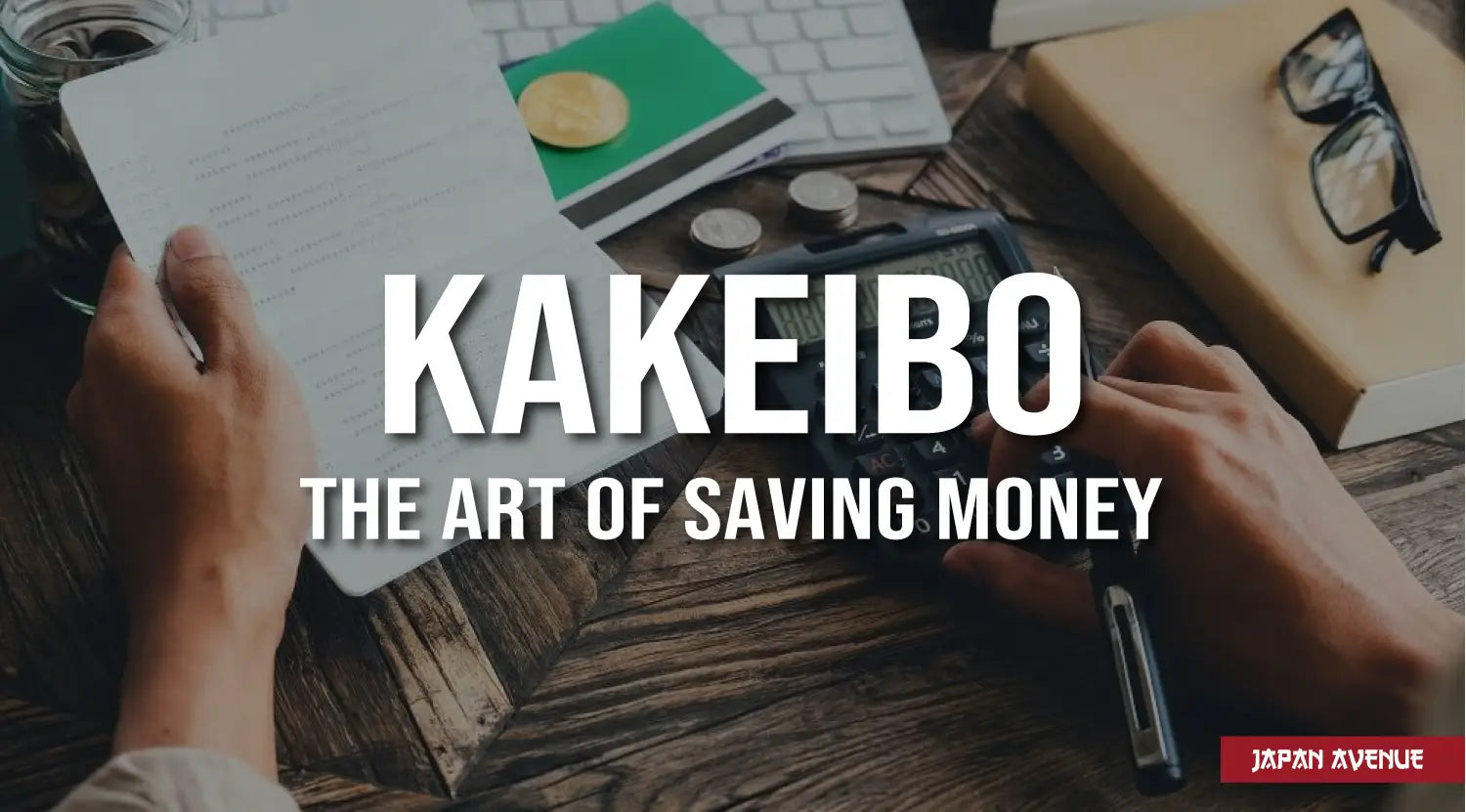Back-to-school time comes with good resolutions... In addition to the annual house cleaning, it's the opportunity to review your organization and save money.
Kakeibo, invented by Motoko Hani, is a Japanese account book that puts savings at the center of your budget.
In this article, we will look at the principles of this age-old Japanese method as well as how to use it. As a bonus, we'll explain how to create your own Kakeibo!
💰 The principle of the Kakeibo method

According to the Japanese philosophy - organization, simplicity and serenity are essential elements for happiness. Being able to manage expenses is therefore a relevant way to improve daily life, just like living in a clutter-free house. After the famous Konmari method which proposes a revolutionary technique of tidying up, the Kakebo will prove to be very useful to keep your budget. In Japanese, Kakeibo (or Kakebo) means "household finance book" or "account book". It is a small notebook in which you set a savings target for the month and note your expenses. An essential tool to become aware of your consumption habits and to save money!
The expenses are divided into 4 categories on a monthly basis:
- Necessary expenses: food, transportation, health...
- Leisure expenses: sports, cinema, theater, cultural outings...
- Pleasure expenses: restaurant, vacations, shopping...
- Unexpected expenses: repairs, unforeseen events...
📓 The art of managing your budget with Kakeibo

Adepts of sobriety and self-control: Japanese people perfectly master the art of saving money. The Kakebo method, which is simple and effective, is easy to adopt. Just follow the following steps:
1. Write down your resources
To start, write down your balance (money left on your bank account) in the designated area. Below, indicate your income (salaries, bonuses, social assistance, pensions, etc.)
2. Enter your fixed expenses
List all of your fixed monthly expenses (rent, electricity, telephone, insurance, internet, etc.) in the section provided.
3. Add your savings goal
Write down the amount of money you wish to save. For example, 10% of your net salary. You can adjust it according to your motivation and expectations for the month.
4. Calculate your available balance
You may now estimate how much you can spend during the month. To do so, simply deduct the fixed expenses and the amount you want to save from your resources.
5. List your expenses
Each time that you spend money, remember to write it down in your account book, specifying the nature and category of the purchase. This will help you to become aware of your expenses and to better visualize your financial situation. Discipline and regularity are essential for this method to be effective. Therefore, we recommend to take out your receipts each day and write them down in your notebook. You can also write down your expenses as you go along during the day. This will surely encourage you to consume less.
6. Review the month
At the end of the month, you can verify if your goals have been reached! It's time to take stock and reflect on your lifestyle in order to optimize your budget. Total up your expenses in order to obtain the total monthly costs for each category. You can also plot them as a percentage to better visualize the ones that impact your budget most. Ask yourself the right questions: Are these expenses really useful? Can you reduce them?
If you succeeded in saving the desired amount. Great job! Find out what helped you to save and then increase the amount of savings for the next month. If you did not succeed in saving, your Kakeibo will show you the category that caused you to overspend and you can analyze why and how to reduce some unnecessary purchases in the future. The point is to learn from your mistakes. If you forgot to anticipate the vacations or if you splurged on those beautiful shoes, you'll be more careful next time.
7. Take stock of the year
At the end of the year, it's time to take stock of your financial situation. How much did you manage to save? Were some months more difficult than others? Why? Does your lifestyle match your philosophy? What would you be willing to sacrifice? What are your plans, your needs for money saving?
✍️ How to create your own Kakeibo?

Many great Kakebo designs can be found in stationery stores or online. They are generally practical and have a nice design. We recommend the pocket size so that you can easily slip it into your handbag. However, you can also design your own Kakeibo. All you need is a notebook and a pen. Digital enthusiasts can also make an Excel spreadsheet by inserting some formulas to automatically calculate the wanted amounts.
Here's how to make a DIY Kakeibo:
Take a nice notebook and your favorite pen.
On top of the page, write the current month. Underneath, write 5 separate headings, leaving a few lines to write your notes. "Checking Accounts", "Income", "Fixed Expenses", "Savings Goal" and "Leftover to Spend".
Checking account
In this section, you will note the money you have left in your bank account at the beginning of the month.
Income
This is where you will list your wages, financial aid and other resources that you will receive during the month.
Fixed expenses
This is where you will list rent, transportation passes and other monthly bills (electricity, internet, insurance...).
Saving goal
Here, you can enter the amount you want to save over the month.
Balance left to spend
This is where you will enter the sum of your available balance and income minus fixed expenses and savings.
On the following pages, set up a monthly expenses table with a first column indicating the date, a second for the description, a third for the category and a last column for the amount.
Lastly, you can create a "monthly balance sheet" page with the following headings:
Total expenses
- Total expenses for the " necessary " category
- Total expenses for the " leisure " category
- Total expenses for the " pleasure " category
- Total expenses for the " extras " category
Graphical representation
A pie chart showing the percentage of your spending by category is a great way to better visualize your financial behavior. Consider using different colors.
Total saved
In this section, you will note the amount you have managed to save.
Forecast for the next month
This is where you'll indicate your projected expenses for the next month, such as house tax, taxes, Christmas gifts, vacations or outings.
Improvements
In this section, you can write down your ideas for improvement. For example, if you notice that you are spending too much money on shopping, make the decision to reduce your purchases or buy second-hand items. In short, it's time to reconsider.

The Japanese lifestyle definitely inspires us more than ever! The Kakeibo is a very efficient way to keep track of your expenses and plan your savings. By keeping this Japanese account book up to date, you will probably save a lot of money and put all the chances on your side to realize your projects.



